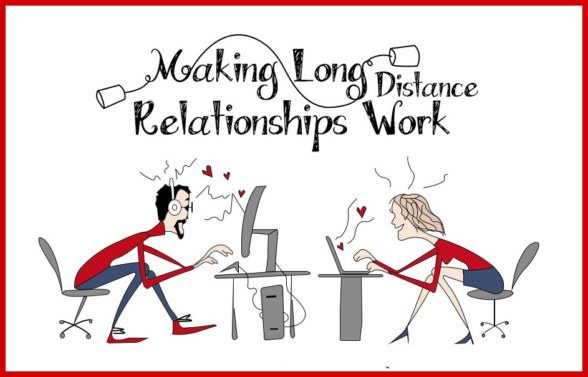Long distance relationship (LDRs) have become increasingly common in today’s globally connected but physically separated world. Whether driven by career demands, education, family obligations, or other circumstances, many couples find themselves maintaining love across miles and time zones. The big question remains: can a long distance relationship actually work? The answer is yes — but it requires effort, commitment, and skill.
This comprehensive article explores what makes long distance relationships successful, common challenges couples face, and practical tips for thriving emotionally and maintaining intimacy despite the separation in 2025.
The Reality and Potential of Long Distance Relationships
Contrary to popular myths, research shows that LDR couples are not necessarily at a disadvantage compared to geographically close couples. Studies reveal comparable or even higher levels of trust, satisfaction, and communication quality in many long distance relationships (Stafford, 2010; Pistole & colleagues, 2010).
Physical absence often encourages partners to focus on emotional connection and purposeful interaction rather than routine contact, which can deepen bonds.
However, the stresses of separation—such as loneliness, jealousy, and logistical difficulties—require conscious management.
Key Factors That Influence LDR Success
1. Clear Communication Is Critical
Effective and honest communication lies at the heart of successful LDRs. Unlike local couples, long distance partners must rely more heavily on verbal and digital exchanges.
Scheduling regular video calls, texting thoughtfully, and sharing daily experiences build intimacy and presence. Avoiding miscommunication through active listening and transparent sharing is essential.
2. Trust and Commitment
Trust forms the foundation of any relationship, especially in LDRs where physical reassurance is limited. Partners need to demonstrate reliability, openness, and fidelity consistently.
Mutual commitment to making the relationship work—even when difficult—motivates resilience. Discuss goals and timelines openly to maintain clarity.
3. Have Realistic Expectations
Understanding that challenges will arise helps reduce frustration. Recognize that intimacy fluctuates and that moments of disconnect are normal.
Distinguish between loneliness caused by distance versus underlying relationship issues requiring attention.
4. Plan Visits and Future Cohabitation
Setting timelines to reunite physically encourages hope and provides motivation. Talking about living arrangements and future plans anchors the relationship in reality and shared purpose.
Flexibility in planning avoids stress and disappointment.
5. Emotional Expressiveness and Vulnerability
LDR success often depends on partners feeling comfortable expressing fears, insecurities, and joys openly.
Vulnerability fosters closeness and trust, mitigating feelings of isolation.
6. Individual Growth and Independence
LDRs provide opportunities for personal growth and autonomy. Supporting each other’s ambitions without excessive dependence strengthens the partnership.
Balancing independence with connection creates mutual satisfaction.
Challenges Commonly Encountered
-
Loneliness and longing: Absence of physical presence can cause emotional setbacks.
-
Time zone differences: Coordinating communication can be complex.
-
Jealousy and insecurity: Distance may exacerbate suspicions or doubts.
-
Communication fatigue: Repeated digital interactions can feel draining.
-
Financial and logistical burdens: Travel and time commitments strain resources.
Addressing these realistically through proactive strategies is crucial.
Practical Tips for Making LDRs Work
-
Maintain a structured communication schedule but allow flexibility.
-
Share multimedia messages: photos, videos, voice notes to simulate presence.
-
Use technology creatively, including shared playlists, games, or virtual activities.
-
Practice mindfulness to manage anxiety and negative thoughts.
-
Celebrate milestones virtually and in person to share joy.
-
Seek counseling if communication breaks down or emotional health suffers.
When to Seek Help
Professional counseling or support groups specializing in LDR dynamics can provide vital guidance. Early intervention enhances communication skills and emotional coping.
Additional Expert Resource
For detailed, research-based strategies to help long distance couples thrive, explore Psyche.co’s therapist-guided tips:
How to make a long-distance relationship work | Psyche
Read More: Top 10 Long Distance Relationship Tips From a Therapist: Thriving in Love Across Miles
Conclusion
Long distance relationships can absolutely work and even thrive in 2025 with clear communication, trust, shared goals, and emotional openness. Although distance introduces challenges, intentional strategies foster connection and resilience. Couples who navigate these complexities successfully build deeper and often more meaningful bonds.
With technology and commitment, physical separation no longer has to equate to emotional distance.








[…] Read More: Can a Long Distance Relationship Work? Insights and Tips for Success in 2025 […]